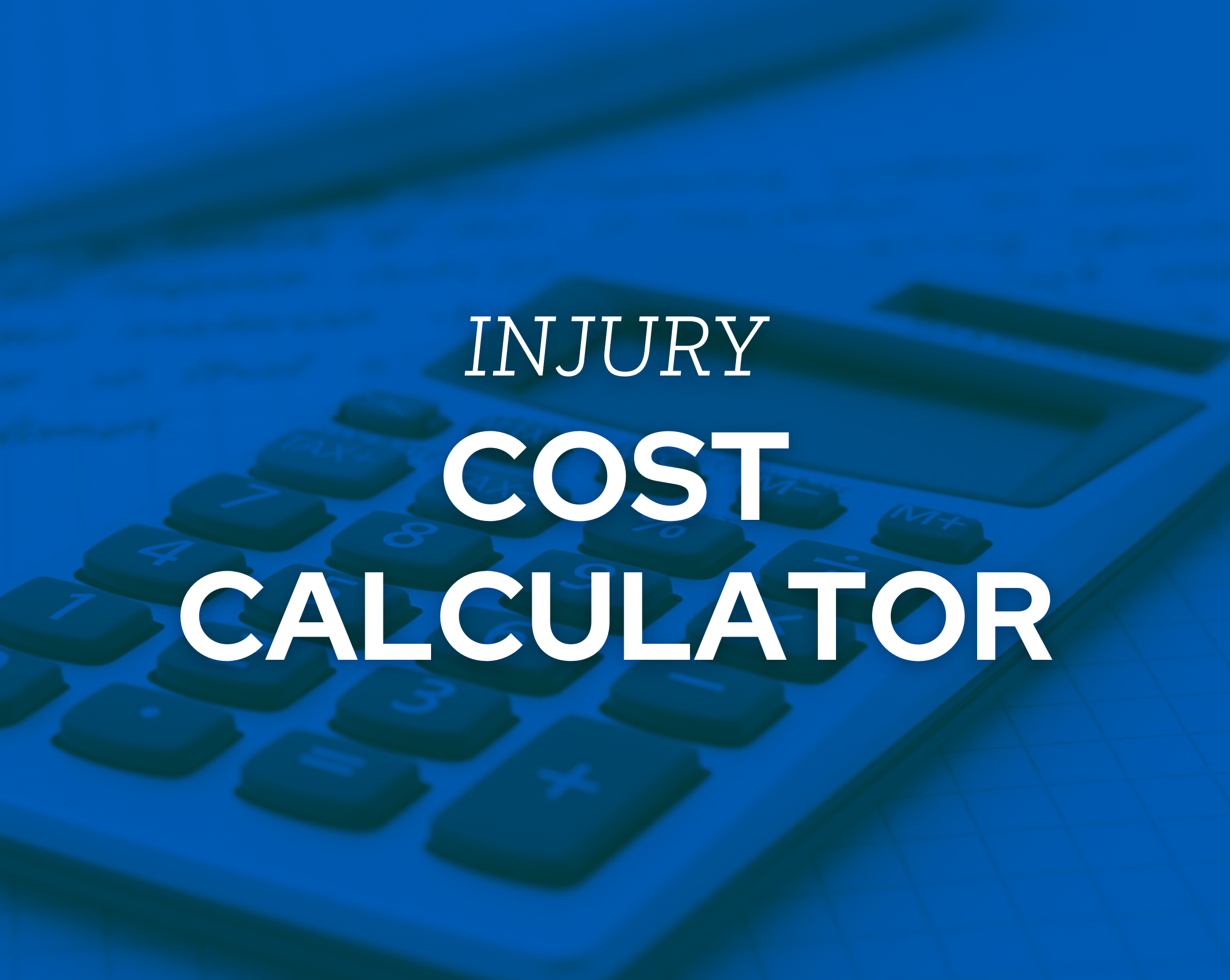How Much Does An Injury Cost Your Business? Try The Injury Cost Calculator
Workplace injuries are estimated to cost the US economy $164.6 billion annually. Use the injury cost calculator below to estimate the costs of a workplace injury.
Workplace Injuries By The Numbers
Worker’s comp averages $1 billion weekly.
- A worker is injured on the job every 7 seconds.
- 1 in 5 workplace fatalities occur in construction.
Estimating Injury Costs
When estimating the costs of an injury, an organization must assess both direct and indirect costs. Additional revenue may also be calculated to consider the revenue required to compensate for the total costs of the injury. Use the injury calculator below to estimate costs and additional revenue. Select “enter cost” to enter a cost directly or click “Select Injury” to choose an injury and it’s estimated costs.
To calculate costs manually follow the steps below.
Step 1) Calculate Direct Costs
Direct costs are the immediate costs of an injury such as emergency room, procedures, doctors visits, medical bills, medicince, and rehab. Such costs are typically covered by worker’s compensation insurance. Click here to download a list of OSHA’s injury direct cost estimates.
Step 2) Calculate Indirect Costs
Indirect costs are not typically covered by worker’s compensation insurance. These include overtime pay coverage, decreased productivity, and damage to company moral and culture. OSHA’s conservative estimate is $1.10 in indirect costs for every $1 of direct costs.
Step 3) Calculate Additional Revenue
Calculate the additional revenue required to compensate for the sum of the direct and indirect costs. Divide the total costs by the profit margin.
Keep in mind that 1.1 ratio for indirect costs is a conservative estimate. In some cases indirect costs may range as high as $4.50 per $1 in direct cost for severe injuries. These higher costs may also include repairs to damaged equipment or property, and the cascading impact of the injury on absenteeism and worker morale.
Consequently, the compensation from just one injury can put a sizeable burden on the entire organization, from additional administrative work, to sales, to rehiring.
6 Tips for Assessing Your Safety Culture
Safety is difficult to quantify. A Total Recordable Incident Rate Calculator helps put some numbers to your workforce’s safety culture. TRIR is an OSHA metric that calculates the number of recordable incidents per 100 people. Further assessment can include reviewing current policies and surveying employees’ perceptions of the workplace.
Other techniques for measuring safety culture often involve interacting directly with supervisors and hourly workers.
Direct Observation can provide insight into employee attitudes and give a sense of daily operations. One key insight to observe is employee willingness to confront unsafe behavior. Observation works well in partnership with studies to confirm or contradict data points.
Interviews allow leadership to explore cultural issues that may not be apparent from observation or studies. However, overgeneralizing complex topics is easy, and the selected employees should represent the broader workforce.
Focus Groups provide an efficient solution to diagnose issues. A skilled interviewer must lead the group in a constructive and balanced conversation.
Surveys allow leadership to gain an overall sense of safety culture and the workers’ perception of their environment. However, survey design is complicated and data can be easily skewed by poorly worded questions or low response rates.
Performance Indicator Tracking provides hard data on the overall state of the safety culture. Monitoring trends is a way to determine what initiatives are impactful, and where safety leaders should concentrate on training and awareness.
Reducing Workplace Injuries
OSHA cites injury and illness prevention programs as an effective way to reduce injuries and fatalities. An effectively implemented program can significantly improve the workplace health and safety environment. The benefits are far-reaching, from increasing compliance to the financial benefits of reducing workers’ compensation.
All effective programs share the key elements of
- management leadership,
- worker participation,
- hazard identification and assessment,
- hazard prevention and control,
- education and training, and
- program evaluation and improvement.
KPA is a demonstrated safety platform that helps leaders reduce workplace hazards and develop a strong safety culture.

